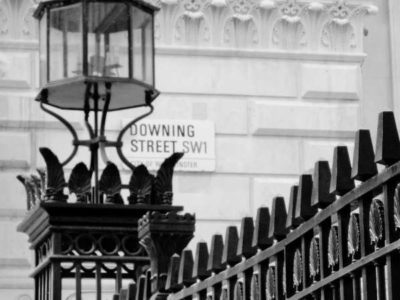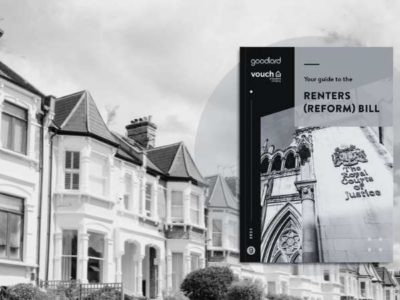The Bank of England has taken the decision to increase the Base Rate to 4.5%.
This is the 12th consecutive increase and the base rate now stands at a 15-year high.
Today’s Bank Rate rise may not have been a surprise, but it is still a shock to see interest rates at a 15-year high after the 12th increase on the bounce since December 2021.
And it’s so demoralising to see UK inflation stuck above 10% – more than twice what was reported in the US yesterday.
Households and businesses across the UK will be wondering just when there’ll be a crumb of comfort to ease the financial strain.
Businesses in particular will be growing weary of hearing the Bank of England say it is using rate increases to cool the economy by making it more expensive for them to borrow.
As the Federation of Small Businesses said on Tuesday, tens of thousands of firms are on the brink of closure because of crippling energy bills, and those that survive will only do so by passing on their increased costs to their customers.
How does raising the cost of borrowing tackle that inflationary stimulus?
Hiking Bank Rate is a blunt instrument, but the Bank of England has little else at its disposal as it tries to get inflation down from 10.1% to its target of just 2%.
Perhaps other interventions are necessary from the government to help ease the pressure on UK plc, such as persuading energy suppliers to negotiate with their business customers to lower bills to affordable levels, and targeting VAT relief at the most beleaguered sectors, such as hospitality.
To misquote John Maynard Keynes, it is of little solace to tell businesses that everything will be fine in the long run, because in the long run a lot of those businesses will be dead, comments Kevin Pratt, mortgage expert at Forbes Advisor.
Charles White Thomson, CEO at Saxo UK, comments:
“Managing inflation with the blunt weapon that are interest rates has always faced choreography issues, similar to breaking a nut with a sledgehammer.
We are now in an economic danger zone, pincered between public enemy number one/ inflation, a 19% increase in food and non-alcoholic beverages which reaffirms the cost of living crisis, and a consumer saddled with outsized debt that was once cheap.
The risk for further policy failure is real and the stakes are getting increasingly high.
The conundrum facing the United Kingdom is more than just beating public enemy number one, or inflation, it is about defeating the high tax and low growth loop and the lovers of the status quo or managed decline.
In an attempt to remove the politics and infighting, I prefer to continue referring to the UK as a PLC.
My resounding conclusion from the UK PLC’s recent financial statement – or budget – is that the management team are in an unenviable position in that there is little wiggle room for large change.
The UK PLC is effectively in a financial straitjacket with constraints including: £2.4 trillion public debt and all the servicing costs this entails, tax to GDP levels approaching record highs or 37.5% and corporation tax moving to 25% from 19% for financial year 2023/24.
Financial outlook statements for generations of UK PLC management have concentrated on the status quo as opposed to a more dramatic plan to seriously kick start growth, confidence, and the all-important upside this brings.
We have an advantage in that UK PLC is the sixth largest global company or economy in the world with all the scale and reach that this brings.
This is about a bold and large plan to ensure that we deliver on its full potential and unleash the prosperity that a large part of the UK shareholders want. This would include making Brexit work, tackling the lack of productivity including the regional inequality gap which has entrenched itself since 2008, an overhaul of the corporate and individual tax structure making the UK a highly attractive place to do business, and having an open an honest debate about the sacred cows including the NHS.
The alternative to a bold and wide changing economic plan, which is not purely based on industrially low interest rates and quantitative easing, is continued stagnation and underperformance.
This will not be easy, but the alternative is to sell out the next generation which should never be a consideration.”
Marcus Dixon, Director of UK Residential Research at JLL comments:
“In the absence of more positive news on UK inflation (hopefully revealed when the April figures are released later this month) most had resigned themselves to a further rate rise from the MPC.
This time to 4.5%. Higher borrowing costs will of course impact both new and existing homeowners coming off fixed rates, but banks had already anticipated rates would rise meaning much of this is already priced into fixed rate deals. Indeed, the housing market remains more resilient than many had anticipated.
The latest results from the RICS Survey show market conditions remain challenging, with agents still expecting prices to fall in the coming months in response to higher borrowing costs and uncertain market sentiment. But the outlook for the next 12 months remains more positive.
Over the longer term there is a clear commitment from both Labour and the Conservatives to support home ownership.
But until we see rates top out, we expect the market to continue to tread water.
This means lower levels of activity but prices will, we expect, remain more resilient as a lack of distress and high levels of equity act as a buffer to more challenging economic conditions.”
Susannah Streeter, head of money and markets, Hargreaves Lansdown, comments:
“The rate raising marathon has passed yet another milestone as policymakers try and pull back runaway inflation.
The hike of 0.25% pushing the base rate to 4.5% was widely forecast, given that super-hot consumer prices are failing to cool off quickly despite rapid tightening.
With wages staying elevated and consumer resilience strong, the finishing line of rate hikes may still be way off.
Although the Bank expect inflation to drop to 5.1% by the end of this year from 10.1% in March, it’s in contrast to the fall to 3.9% level it predicted in February, with food prices expected to stay stubbornly high.
But the Bank is also admitting that the price spiral may prove harder to come down than it previously expected, citing upward risks to forecasts, and that’s why the road still seems wide open for another hike.
Rather than flagging and dropping back into recession, the economy is jogging very slowly onwards.
The Bank has tweaked its forecast for growth, estimating it to be around 0.2% for the first half of the year.
As consumers relax amid this better-than-expected health check on the economy, the latest data from the ONS indicates they are ploughing through savings and racking up borrowing, with spending on debit and credit cards jumping 11 percentage points last week.
This more optimistic attitude risks keeping the fires of inflation smouldering.
Consumer goods giants have been able to pass on price hikes to consumers and with appetite to spend staying strong, that looks set to continue.
If prices stay elevated the clamour for higher wages is also less likely to quieten, increasing the risks that higher inflation will bed down.
This is all playing on policymakers’ minds, and the uncomfortable truth is that that they need to see higher borrowing costs make life much more painful for companies and consumers, with insolvencies increasing and jobs becoming more precarious, before caution returns and demand drops back.
After softening a little ahead of the announcement sterling jumped back above $1.26 as policymakers consider slogging on with further rate hikes, just as the Federal Reserve appears poised to press pause.
This is because US headline inflation has dropped back to less than half the rate its running in the UK.
However, although the pound has strengthened significantly since the disastrous days of the Truss administration last September, it remains very weak compared to the level it traded at before the vote for Brexit.
This intensifies the inflationary headache for the Bank of England as it makes the cost of imported goods more expensive, fuelling scorching consumer prices.”
Simon Gammon, managing partner at Knight Frank Finance, comments:
“We’re not expecting any substantial moves in mortgage rates as a result of today’s decision.
Several large lenders have notched rates up in the past fortnight, but that’s largely to control business levels.
Borrowers are extremely sensitive to interest rates at the moment so the cheapest on the high street tends to get swamped.
Mortgage rates are going to come down eventually, but probably not for the rest of this year – at least not by much.
The biggest conundrum for most borrowers at the moment is whether to fix for two years or take a tracker.
Both are priced around 0.2% – 0.3% over base rate, so borrowers refinancing now have to take a view on whether they think interest rates will fall within the next two years, in which case a tracker might be suitable.
Of course that comes with the risk that your monthly payments will rise if the Bank of England opts to raise interest rates further, so it’s a highly personal decision.”
Tom Bill, head of UK residential research at Knight Frank, comments:
“The latest rate rise won’t have a huge impact on the housing market but sentiment will be dented if the peak starts to feel further away.
For now, after the mini-Budget threw a bucket of cold water over the property market, activity has become lukewarm.
House price growth is largely flat, sales volumes hit their low-point in January and the economic backdrop is gradually improving.
We expect prices may fall by a few percent this year as higher mortgage rates erode demand but activity will be supported by a strong jobs market, record levels of housing equity and lockdown savings.
As the general election moves onto the radar over the next 12 months, it may be that political uncertainty curbs demand even as the bank rate and inflation move past their peak.”
Jeremy Leaf, north London estate agent and a former RICS residential chairman, comments:
“This latest increase in rates comes as no surprise and for that reason, the impact on the housing market is likely to be relatively modest.
Activity has certainly improved since the beginning of the year although buyers remain cautious about taking on debt.
Nevertheless, there are many buyers who sense there is an opportunity to take advantage of stabilising, and even softening in some cases, prices.
Most buyers are telling us they need to see value if they are going to commit and we have noticed many more viewings before offers are forthcoming for those reasons.
Realistic sellers are recognising that the differential between selling and buying is what they should be concentrating on, rather than headline prices.”
Marylen Edwards, head of buy-to-let lending at property lender MT Finance, comments:
“Considering recent events in the global financial markets, this latest rate rise was not unexpected.
While a reduction in base rate would have been welcome news, it feels as though another increase is necessary at this moment in time to combat stubbornly high inflation and help bring back some much-needed stability.
Hopefully this will be the last rise before we start to see a plateau.”
Joshua Raymond, Director at online investment platform XTB.com, comments:
“The Bank of England’s MPC today hiked UK interest rates yet again to 4.5%, a rise of 0.25% and lifting UK interest rates to their highest level since 2008.
This latest rate hike was much expected by the market and had been effectively priced to the strength of the pound after recent data showed that UK inflation remained stubbornly high and had not subsided as fast as previously expected.
As a result we did see a small jump in the GBPUSD exchange rate yet this move was not significant given the rate continues to trade close to 1-year highs.
The market focus now turns to the future path of rate decisions and it’s here where there remains a big question. We already know wholesale energy prices have collapsed much faster than initially expected, with spot natural gas prices trading 50% lower than in February with equally sharp falls in futures prices.
This should quicken the pace of inflation cooling in the coming months which could convince the BoE to refrain from a thirteenth consecutive hike.
But it should also be noted that food price inflation in particular remains stubbornly high, whilst wage growth and strong employment might keep inflation temperatures warm.
In today’s MPC decision, the committee admitted that it would have to hike rates even further if these conditions persist so that leaves the door ajar for more hikes.”
Alex Lyle, director of Richmond estate agency Antony Roberts, comments:
“It is a real shame that the Bank of England felt it needed to raise interest rates again this month, as a hold would have boosted the momentum we have been seeing in the housing market, particularly since Easter.
Prices have been holding up on large family homes in particular and we have found the volume of sales in the first quarter up considerably compared with the same period last year.
Yet another interest rate rise, with the potential for more to come, creates uncertainty, which is not good for the market.
Although some areas have proven remarkably resilient to increasing interest rates, inevitably this is less the case the higher they go.”
Mark Harris, chief executive of mortgage broker SPF Private Clients, comments:
“As interest rates hit 4.5 per cent, it feels like they are nearing their peak, if not there already, particularly with the Bank expecting inflation to fall sharply from April.
Fixed rates are influenced by future base-rate movements and therefore not directly linked to what is decided this week.
Indeed, several lenders have reduced their high loan-to-value fixed-rate mortgages in the past few days which will benefit first-time buyers, while the pricing of lower LTV deals has risen on the back of higher Swap rates.
Those on base-rate trackers will find their mortgage rate increase by 25 basis points.
A borrower with a £250,000 repayment mortgage on a 25-year term and a pay rate of 4.25 per cent will see that rise to 4.5 per cent, with monthly payments rising from £1,354 to £1,390.
The cumulation of 12 successive rate rises is significant.
A borrower with a £250,000 mortgage on a tracker pegged at 1 per cent over base rate will have seen their monthly payments rise from £943 in December 2021, when base rate rose from 0.1 per cent to 0.25 per cent, to £1,535 today.
With a variable-rate deal, the link between the lender’s variable rate and base-rate moves are less transparent.
The lender may decide to pass on none, some, all or more than the base-rate rise.
With so much volatility in the markets, it is more important than ever that borrowers seek advice from a whole-of-market broker.”
Adrian Anderson, Director of property finance specialists, Anderson Harris, comments:
“The never-ending story of interest rate rises continues today with the Bank of England’s decision to set rates at 4.5%, resulting in yet another blow to borrowers.
Stubbornly high inflation has seen interest rates continue to soar for well over a year and the landscape has changed once again since the last MPC meeting in March, offering a bleaker outlook for inflation as banks raise mortgage rates and tighten their lending criteria meaning many cannot borrow as much as they could this time last year.
After 14 years of historically low mortgage rates, today’s announcement is more bad news for many existing homeowners.
The cost-of-living crisis coupled with the prospect of higher mortgage payments has prompted an increase from clients looking to move to interest-only mortgages in an attempt to soften the blow.
What next? Who knows, and that is part of the problem.
Uncertainty could stall the housing market.
High interest rates, and in turn, high mortgage rates, seem to be hanging around for longer than maybe many expected and with 1.4 million households on fixed-rate deals ending this year, concerns over an increase in payment defaults in the future is very real.”
Shane O’Neill, Head of Interest Rates at Validus Risk Management, comments:
“After a busy week for central banks last week, with the Fed likely hitting pause and the ECB pushing ahead with more hikes, we had the Bank of England come to market today.
The MPC went with market expectations and hiked by 0.25% in a 7-2 vote, taking the rate to 4.5%.
Where the Fed recently omitted a line about future tightening, the BoE did not – if inflation persists, they’ll continue to tighten – the first nod to a BoE adjusting to become more hawkish than their transatlantic counterparts.
The biggest news from today’s release is the changes to projections – inflation projections were increased across the forecast horizon and GDP projections got a major boost, with the BoE now expecting the UK to avoid a recession.
Quite the change from the 8 quarters of declining growth projected a matter of months ago. Surprisingly good demand in the economy, lower energy prices and a more resilient labour and housing market is seemingly giving the BoE the confidence required to continue tackling inflation.
From this release there doesn’t appear to be a target rate in mind, but rather we’re looking for a rate which gets the job done on the inflation front.
Markets continue to price an additional 50bps of hikes, coming over the next 2-3 meetings – though not a game changing meeting, this definitely errs on the more hawkish side of recent BoE communication and should support the strength seen in GBP against the USD and EUR over recent weeks.”
Mohsin Rashid, CEO of ZIPZERO, comments:
“The Bank’s twelfth consecutive interest rate hike means more misery for the British people.
Among those hit the hardest are homeowners with variable-rate mortgages, who will once again see their repayments surge.
This comes as an estimated 700,000 households missed mortgage payments or rent last month.
Undoubtedly, this decision will lead to inevitable repossessions.
But it does not stop there: with inflation forcing many Britons to become increasingly reliant on borrowing to simply put food on the table – families will be forced to make more sacrifices.
Households have shown a remarkable ability to adjust their shopping habits to reduce overall expenses.
But the government must now act and provide a life raft for those struggling to stay afloat amid heavy price rises from every direction.
In the meantime, I urge consumers to continue to find novel money-saving solutions that can reduce their spending and lower their bills.”





















Comments